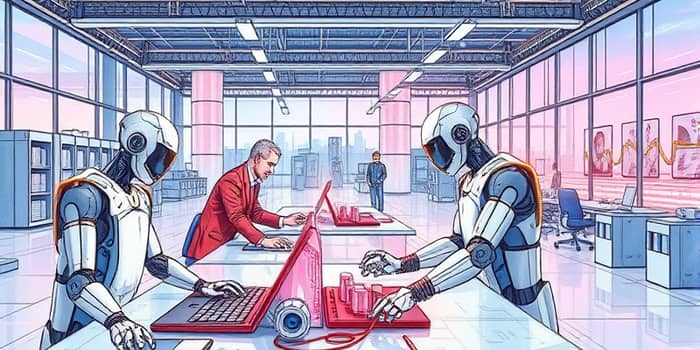
As we reach mid-2025, the global labor market stands at a crossroads. The rapid advancements in automation and artificial intelligence are reshaping how businesses operate, how workers engage, and how economies evolve. This article examines the scale of change, the risks, the opportunities, and the strategies that will define tomorrow’s workplaces.
Recent projections reveal a seismic shift in employment dynamics. By 2025, the World Economic Forum forecasts that 85 million jobs will be replaced by AI. Simultaneously, emerging technologies could generate 11 million new roles, hinting at a net positive but uneven outcome.
Key numbers paint a striking picture:
Such figures underscore the breadth of transformation across geographies and industries. While advanced economies face higher displacement rates, emerging markets confront both automation and offshoring pressures.
It’s crucial to distinguish between full job loss and task automation. McKinsey research indicates that only 5% of jobs are fully automatable today, yet up to 30% of activities in 60% of occupations could be automated.
This nuanced view highlights that many roles will evolve rather than vanish. Job characteristics are shifting toward hybrid models, requiring humans to collaborate with AI systems, oversee automated workflows, and continuously upskill. Entry-level positions in administration, retail, and manufacturing are particularly vulnerable, exacerbating concerns about social mobility.
Amid displacement fears, new opportunities are emerging. Technology-driven disruptions are projected to create more jobs than they eliminate in key periods, particularly in AI engineering, robotics maintenance, data science, and ethics oversight.
Productivity enhancements are a double-edged sword. Automation reduces labor demand for routine tasks but boosts output in complementary roles. Without targeted upskilling, most productivity gains accrue to capital rather than workers, deepening inequality.
The impact of automation varies dramatically by sector. The following table outlines who stands to lose and who may thrive.
Automation is deepening workforce polarization. Routine white-collar and entry-level roles decline, while demand for mid- and high-skilled professionals rises. Nearly 49% of Gen Z job seekers in the U.S. feel AI has devalued their degrees, signaling frustration among emerging talent pools.
Reskilling and upskilling have become imperatives. With 30% of U.S. workers fearing job loss by 2025, massive interest in training programs is evident. Companies and governments must invest in massive interest in retraining initiatives to equip workers with AI and data literacy.
Companies are rapidly integrating AI tools, with nearly half reporting workforce reductions due to generative AI adoption. To navigate this shift, organizations should adopt proactive strategies:
Policymakers must respond with robust measures: strengthened social safety nets, incentives for corporate upskilling, and educational reforms that emphasize digital competencies. Addressing the uneven distribution of benefits will be critical to fostering inclusive growth.
Looking ahead, full automation of half the world’s tasks could span two decades. Much depends on the agility of educational systems, the foresight of corporate leadership, and the resilience of policy frameworks.
Key uncertainties include the pace of technological innovation, geographic disparities in adoption, and evolving regulatory landscapes. Yet, with thoughtful strategy, the disruptions of today can become the foundations of a more productive, equitable tomorrow.
By balancing risk with foresight, and disruption with opportunity, stakeholders can harness the transformative potential of automation and AI to build a future of work that is both innovative and inclusive.
References













